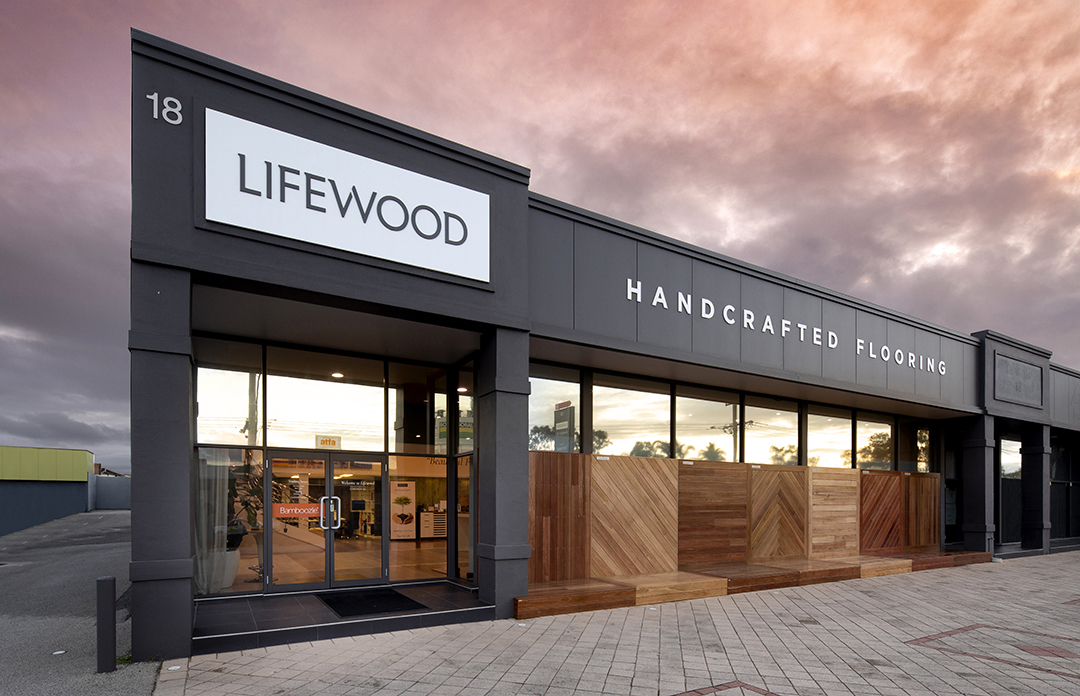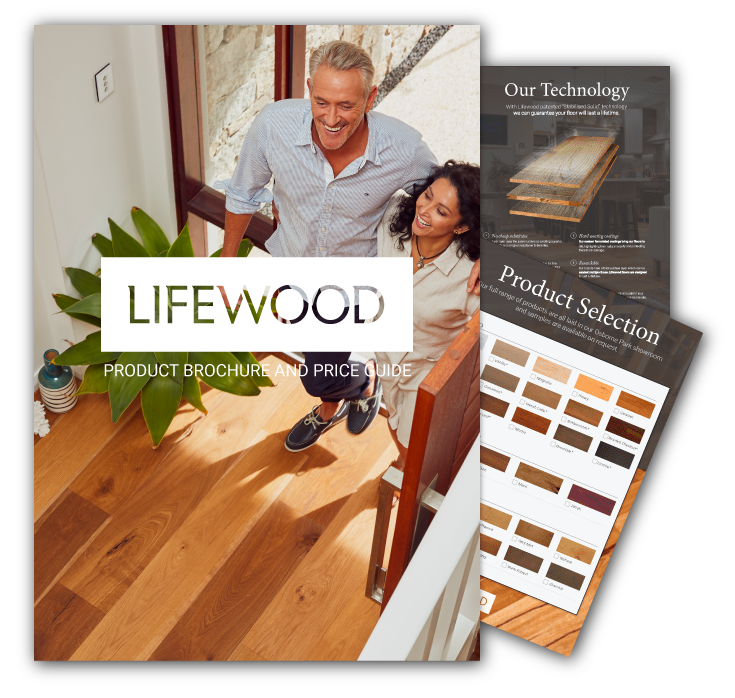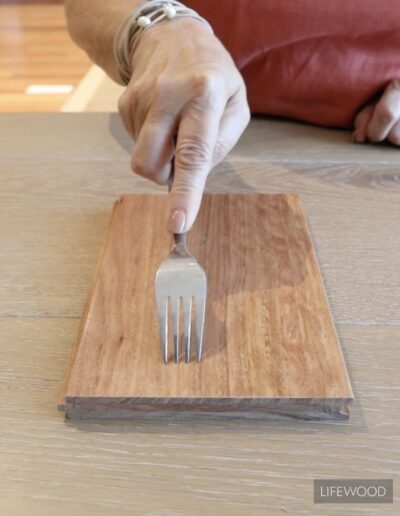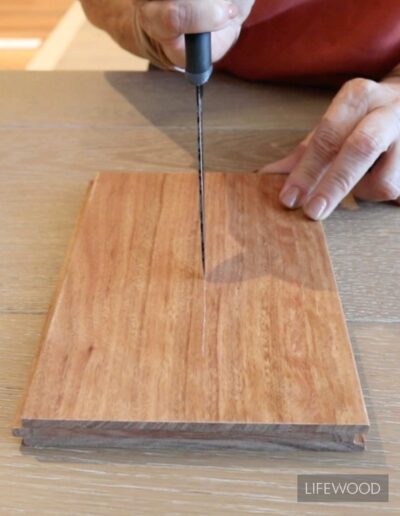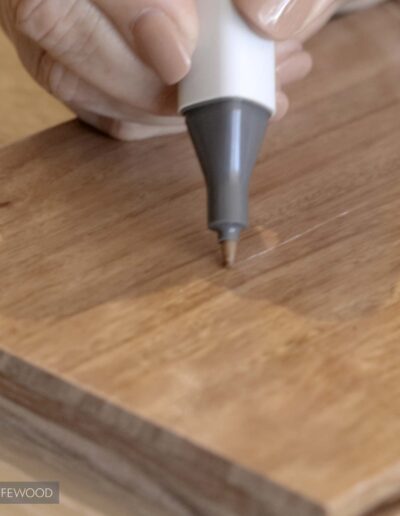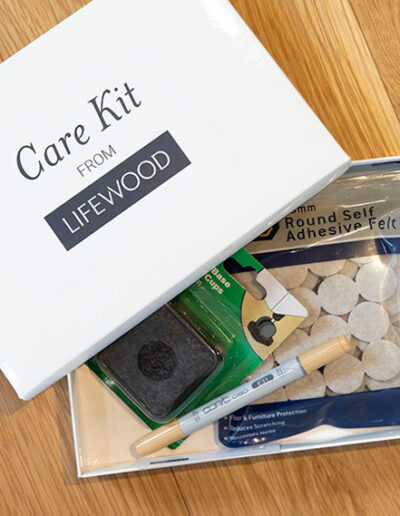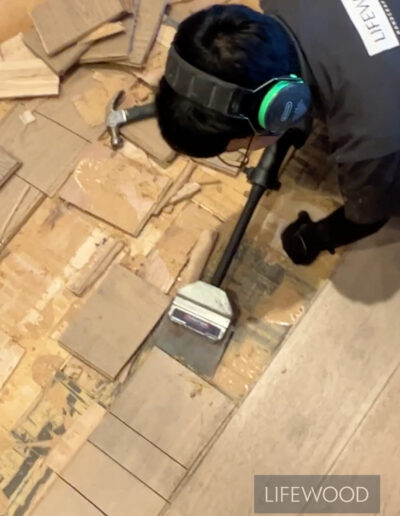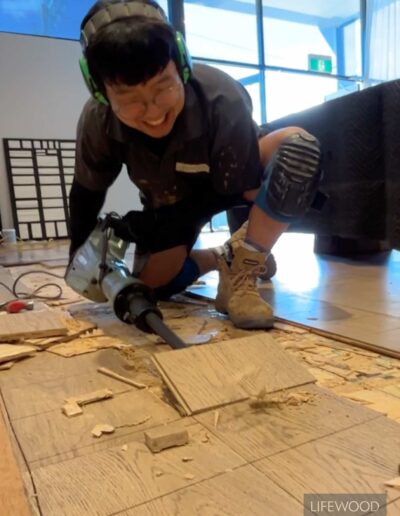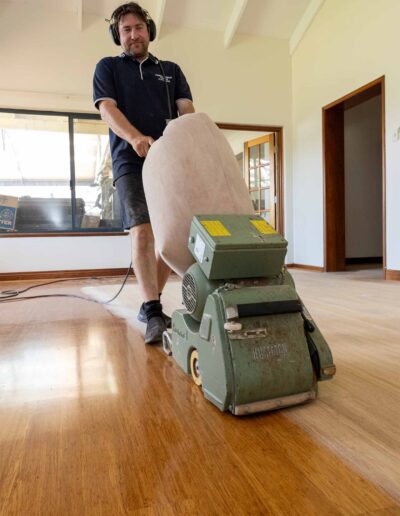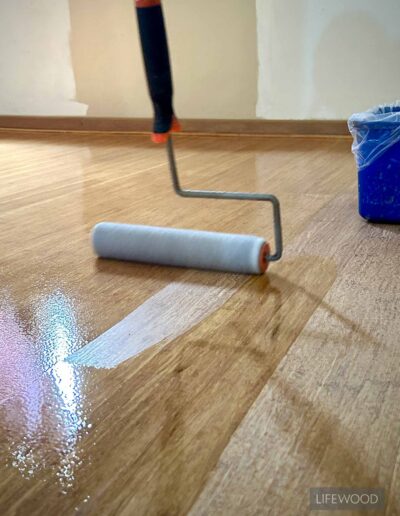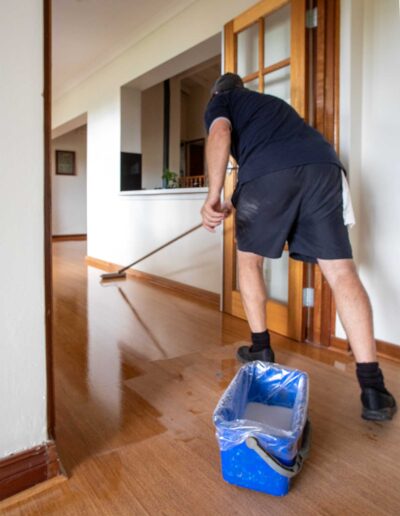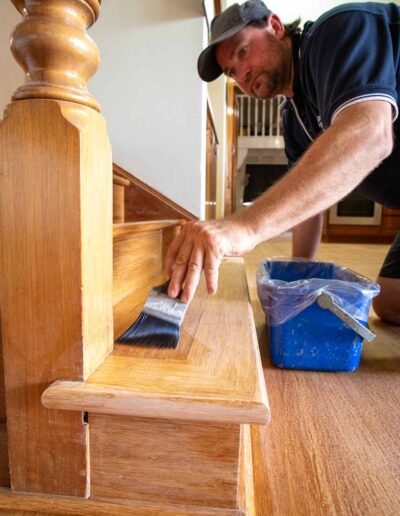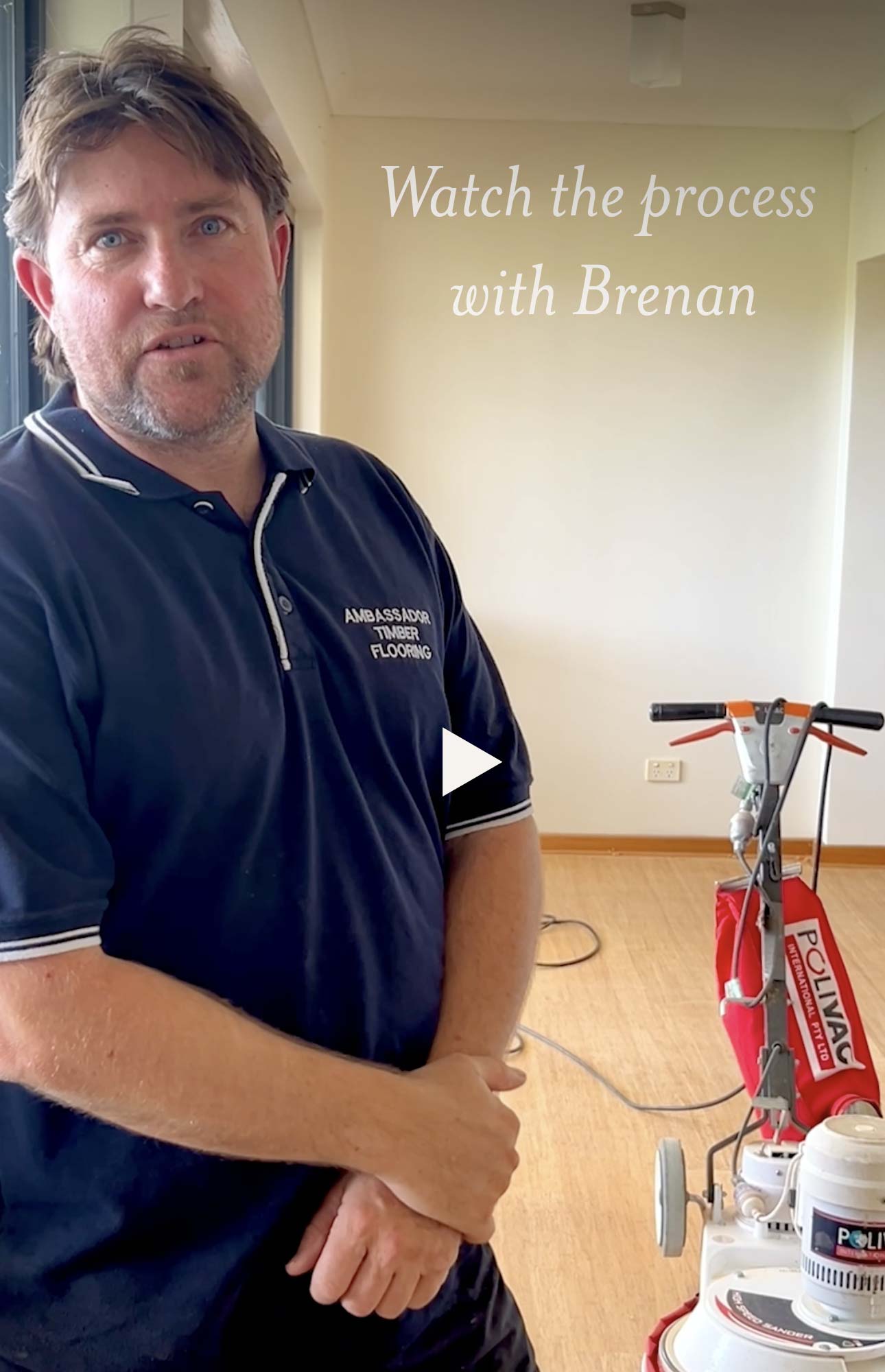FLOOR OF THE WEEK
3 Ways to Maintain your Lifewood Timber Floor
We are often asked about the care of a Lifewood floor, with most questions relating to surfaces scratches, accidental deeper marks from moving heavy furniture and whether our boards can be sanded and recoated.
We want you to have a beautiful timber floor that will last a lifetime and we’re pleased to say we have the answers.
Managing Surface Scratches
If your floor sustains a scratch, be it from a pet, moving furniture, grit walked in from outside or moving furniture it is helpful to know the scratch is likely to be on the top polyurethane layer and can be ‘hidden’ using the colour coded pen supplied in your care kit. The timber itself is not damaged by a light scratch and any evidence of a scratch is largely hidden by the pens work.
Tips and Suggestions: Use felt on the underside of your furniture legs. Use exterior mats to capture sand and grit before it is walked in. Keep pets nails trimmed. Take extra precautions when moving heavy items like fridges, pool tables and pianos.
Replacing a few boards
In the event something heavy is moved without precaution, like a fridge, or a plumbing accident soaks a few boards, it is possible to selectively remove and replace boards. Sometimes accidents happen so we suggest a spare box is purchased at the initial installation so you have boards ready to replace damaged boards, that are from the same batch.
Sand and Polish/Recoat
At this point you have the option to give your floor a facelift, taking the top layer away and recoating for the next 10 plus years.
Need help choosing the perfect floor?
Visit our showroom and we can help you choose the perfect floor to suit your home and lifestyle.
